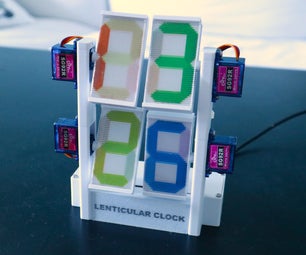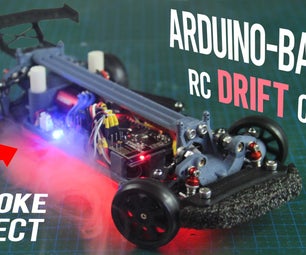Introduction: Control Speed Motor PID
This is briefly instruction to control motor speed using PID algorithm. Also in this project, motor speed will be print out at computer screen
Part list to purchase:
1. Motor with encoder: https://amzn.to/2NwsNxH
2. H-bridge: https://amzn.to/2QS2FeI
3. Arduino Pro Mini: https://amzn.to/2QS2FeI
Step 1:
Connect motor to Arduino through H-bridge
Program Arduino as:
void loop() {
if (stringComplete) {
// clear the string when COM receiving is completed
mySt = ""; //note: in code below, mySt will not become blank, mySt is blank until '\n' is received
stringComplete = false;
}
//receive command from Visual Studio
if (mySt.substring(0,8) == "vs_start"){
digitalWrite(pin_fwd,1); //run motor run forward
digitalWrite(pin_bwd,0);
motor_start = true;
}
if (mySt.substring(0,7) == "vs_stop"){
digitalWrite(pin_fwd,0);
digitalWrite(pin_bwd,0); //stop motor
motor_start = false;
}
if (mySt.substring(0,12) == "vs_set_speed"){
set_speed = mySt.substring(12,mySt.length()).toFloat(); //get string after set_speed
}
if (mySt.substring(0,5) == "vs_kp"){
kp = mySt.substring(5,mySt.length()).toFloat(); //get string after vs_kp
}
if (mySt.substring(0,5) == "vs_ki"){
ki = mySt.substring(5,mySt.length()).toFloat(); //get string after vs_ki
}
if (mySt.substring(0,5) == "vs_kd"){
kd = mySt.substring(5,mySt.length()).toFloat(); //get string after vs_kd
}
}
void detect_a() {
encoder+=1; //increasing encoder at new pulse
m_direction = digitalRead(pin_b); //read direction of motor
}
ISR(TIMER1_OVF_vect) // interrupt service routine - tick every 0.1sec
{
TCNT1 = timer1_counter; // set timer
pv_speed = 60.0*(encoder/200.0)/0.1; //calculate motor speed, unit is rpm
encoder=0;
//print out speed
if (Serial.available() <= 0) {
Serial.print("speed");
Serial.println(pv_speed); //Print speed (rpm) value to Visual Studio
}
//PID program
if (motor_start){
e_speed = set_speed - pv_speed;
pwm_pulse = e_speed*kp + e_speed_sum*ki + (e_speed - e_speed_pre)*kd;
e_speed_pre = e_speed; //save last (previous) error
e_speed_sum += e_speed; //sum of error
if (e_speed_sum >4000) e_speed_sum = 4000;
if (e_speed_sum <-4000) e_speed_sum = -4000;
}
else{
e_speed = 0;
e_speed_pre = 0;
e_speed_sum = 0;
pwm_pulse = 0;
}
//update new speed
if (pwm_pulse <255 & pwm_pulse >0){
analogWrite(pin_pwm,pwm_pulse); //set motor speed
}
else{
if (pwm_pulse>255){
analogWrite(pin_pwm,255);
}
else{
analogWrite(pin_pwm,0);
}
}
}
Step 2: Work at Visual Studio C++
Coding in Visual Studio C++ is quite long, see code at this link
https://drive.google.com/file/d/0B1UeJfx4pZ1GV1YzN1k0aElPb2c/view?usp=sharing
Step 3: RUN It
Run it with speed as you wish
See more instruction at our blog: http://engineer2you.blogspot.com/2016/12/arduino-motor-pid-speed-control.html











